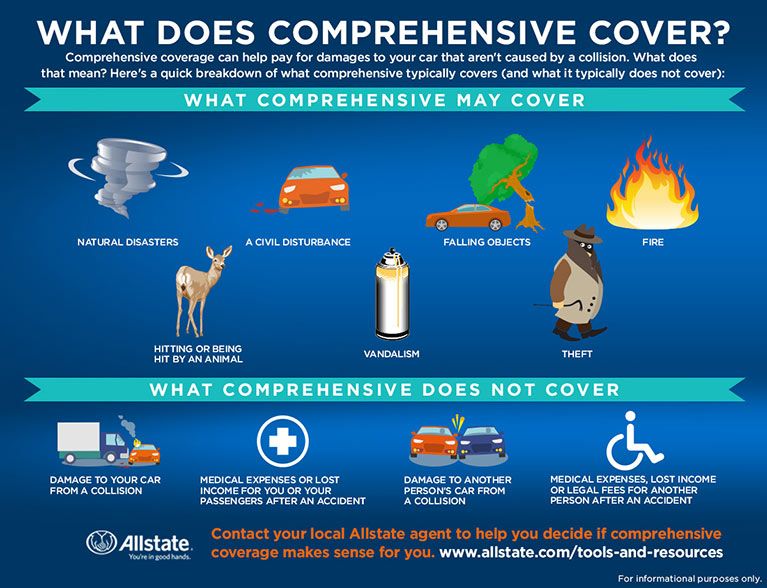
Navigating the world of insurance can feel like deciphering a complex code. Understanding what a comprehensive insurance policy truly covers is crucial for securing your financial well-being. This guide unravels the intricacies of comprehensive insurance, explaining its core components, coverage areas, and the factors influencing its cost. We’ll explore various types of comprehensive insurance, from protecting your home and car to safeguarding your health, and help you make informed decisions about choosing the right plan for your specific needs.
From defining comprehensive insurance and detailing its coverage to navigating the claims process and understanding policy documents, we aim to provide a clear and comprehensive understanding of this vital aspect of financial planning. This guide empowers you to confidently assess your risks and choose a policy that offers the appropriate level of protection.
Defining “Comprehensive Insurance”

Comprehensive insurance provides extensive coverage against a wide range of risks, offering greater protection than more limited policies. It aims to safeguard individuals and businesses from significant financial losses resulting from unforeseen events. Understanding its core components is crucial for making informed decisions about insurance needs.
Comprehensive insurance policies typically bundle several types of coverage into a single package. This contrasts with more specialized policies that only cover specific risks. The exact components vary depending on the type of insurance and the specific policy purchased. However, the overarching goal remains the same: to provide comprehensive protection.
Core Components of Comprehensive Insurance Policies
Comprehensive insurance policies generally include coverage for various perils, depending on the type of insurance. Common components include coverage for damage caused by accidents, theft, vandalism, fire, and natural disasters. Many policies also incorporate liability coverage, protecting the insured against legal responsibility for damages caused to others. Additional features, such as emergency medical services or legal assistance, may also be included.
Examples of Comprehensive Insurance
Several common types of insurance offer comprehensive coverage. Auto insurance, for example, can include collision coverage (damage to your vehicle in an accident), comprehensive coverage (damage from non-collision events like hail or theft), and liability coverage (covering injuries or damages to others). Homeowners insurance often covers damage from fire, wind, and theft, as well as liability for injuries sustained on the property. Health insurance, in its most comprehensive form, covers a wide array of medical expenses, including hospitalization, doctor visits, and prescription drugs.
Differences Between Comprehensive and Other Insurance Types
The key difference between comprehensive insurance and other types lies in the breadth of coverage. Liability-only insurance, for example, only covers damages you are legally responsible for causing to others. It does not cover damage to your own property or vehicle. Similarly, collision-only auto insurance only covers damage to your vehicle in an accident, excluding other potential risks like theft or weather damage. Comprehensive insurance aims to be more all-encompassing, providing broader protection against a wider range of risks.
Comparison of Comprehensive Insurance Plans
The following table compares coverage features across different comprehensive insurance plans. Remember that specific coverage details and premium ranges will vary based on factors such as location, individual risk profile, and the insurer.
| Plan Name | Coverage Details | Exclusions | Premium Range |
|---|---|---|---|
| Comprehensive Auto Insurance (Example A) | Collision, comprehensive, liability, uninsured/underinsured motorist | Wear and tear, intentional damage | $1000 – $2500 per year |
| Comprehensive Homeowners Insurance (Example B) | Dwelling coverage, personal property, liability, additional living expenses | Flooding (unless added as a rider), earthquakes (unless added as a rider), intentional damage | $700 – $2000 per year |
| Comprehensive Health Insurance (Example C) | Hospitalization, doctor visits, prescription drugs, preventative care | Cosmetic procedures (usually), pre-existing conditions (depending on the plan) | $500 – $1500 per month |
| Comprehensive Travel Insurance (Example D) | Trip cancellation, medical emergencies, lost luggage, flight delays | Pre-existing conditions (often), acts of war, reckless behavior | $50 – $200 per trip |
Coverage Areas of Comprehensive Insurance
Comprehensive insurance aims to provide broad protection against a wide range of risks that could damage or destroy your insured property or cause you financial loss. Understanding the specific coverage areas is crucial to ensuring you have the right level of protection. This section details the typical coverage areas, limitations, and examples to clarify what is, and isn’t, included.
Risks Covered Under a Typical Comprehensive Policy
A typical comprehensive insurance policy covers a broad spectrum of perils. This includes damage or loss resulting from accidents, theft, vandalism, and various natural disasters. The specific events covered can vary depending on the policy and the insurer, but generally encompass a wide range of unforeseen circumstances. It’s important to carefully review your policy wording to understand the precise details of your coverage.
Extent of Coverage for Different Events
Accidents, whether involving other vehicles or not, are typically covered under comprehensive insurance, including damage to your own vehicle and liability for damage to other property or injury to other people. Theft, including attempted theft, is usually covered, compensating for the loss of your vehicle or its contents. Natural disasters such as floods, fires, earthquakes, and storms are generally covered, though the extent of coverage may be subject to specific policy limitations and exclusions. For instance, flood damage might require a separate flood insurance policy, even with comprehensive coverage.
Limitations and Exclusions in Comprehensive Insurance Policies
While comprehensive insurance offers broad protection, it’s important to be aware of its limitations and exclusions. Common exclusions include damage caused by wear and tear, gradual deterioration, or intentional acts by the policyholder. Certain types of damage, such as damage caused by war or nuclear events, are also typically excluded. Furthermore, the policy may have limits on the amount of coverage for specific events or types of losses. For example, there might be a maximum payout for theft, or a deductible that the policyholder must pay before the insurance company covers the remaining costs. It is vital to carefully review your policy documents to understand these limitations.
Examples of Coverage and Non-Coverage Scenarios
Consider this scenario: A hailstorm causes significant damage to your car’s paintwork and windshield. Comprehensive insurance would likely cover the cost of repairs. However, if your car’s engine fails due to lack of regular maintenance, this would generally not be covered. Similarly, if you intentionally damage your own car, this would be excluded from coverage. Another example: Your car is stolen from your driveway. Comprehensive insurance would cover the loss of your vehicle. But if your car is damaged because you drove it recklessly and crashed into a tree, your coverage may depend on the specifics of your policy, and liability coverage may be involved rather than comprehensive coverage. The difference lies in whether the damage was accidental and unforeseen, or caused by negligence or intentional actions.
Factors Influencing Comprehensive Insurance Costs

Several key factors interact to determine the final cost of your comprehensive insurance premium. Understanding these influences allows for informed decision-making and potentially helps you secure more favorable rates. This section will explore the primary elements that insurance companies consider when calculating your premium.
Age of the Insured
Age significantly impacts insurance premiums. Younger drivers, particularly those with less driving experience, are statistically more likely to be involved in accidents. Insurance companies reflect this higher risk by charging higher premiums for younger drivers. As drivers age and accumulate years of safe driving, their premiums generally decrease, reflecting a lower perceived risk. This trend continues until a certain age, after which premiums may increase slightly again due to potential health concerns affecting driving ability. For example, a 20-year-old new driver might pay significantly more than a 50-year-old with a clean driving record.
Location
Geographic location plays a crucial role in determining insurance costs. Areas with higher crime rates, more frequent accidents, or higher repair costs will typically result in higher premiums. Urban areas often have higher premiums than rural areas due to increased traffic congestion, higher likelihood of theft, and potentially higher repair costs associated with more frequent minor accidents. For instance, someone living in a densely populated city center might pay considerably more than someone living in a quiet suburban neighborhood.
Claims History
An individual’s claims history is a major factor influencing insurance premiums. A clean driving record with no accidents or claims will typically result in lower premiums. Conversely, multiple claims or accidents in the past will significantly increase premiums, reflecting the higher risk associated with a driver’s history. Even minor incidents can impact premiums. For example, a driver with two at-fault accidents in the past three years will likely face much higher premiums compared to a driver with a spotless record.
Deductibles and Coverage Limits
Deductibles and coverage limits directly influence the overall cost of comprehensive insurance. A higher deductible (the amount you pay out-of-pocket before insurance coverage kicks in) generally leads to lower premiums. Conversely, a lower deductible results in higher premiums. Similarly, higher coverage limits (the maximum amount the insurance company will pay for a claim) lead to higher premiums. Choosing the right balance between deductible and coverage limits is crucial to managing cost effectively while ensuring adequate protection. For example, a $1000 deductible will result in a lower premium than a $500 deductible, but you’ll pay more out-of-pocket in the event of a claim.
Pricing Structures of Different Providers
Different insurance providers utilize varying pricing models and algorithms. These differences can lead to significant variations in premiums for the same coverage. Some insurers may weigh certain factors more heavily than others. It’s essential to compare quotes from multiple providers to find the most competitive rates for your specific circumstances. Factors such as the insurer’s risk assessment methodology, their operating costs, and their profit margins all contribute to the final premium. A thorough comparison across several insurers is therefore crucial.
Hypothetical Scenario
Consider two drivers, both seeking comprehensive car insurance. Driver A is a 25-year-old living in a rural area with a clean driving record, choosing a $500 deductible and standard coverage limits. Driver B is a 35-year-old living in a major city with one at-fault accident in their history, opting for a $1000 deductible and higher coverage limits. Due to the factors mentioned above (age, location, claims history, and deductible/coverage limits), Driver B would likely pay a significantly higher premium than Driver A, even though they are older. This highlights the complex interplay of factors influencing insurance costs.
Choosing the Right Comprehensive Insurance Plan

Selecting the right comprehensive insurance plan is crucial for ensuring adequate protection against unforeseen circumstances. The ideal plan balances comprehensive coverage with affordability and aligns with your specific needs and risk profile. Careful consideration of several key factors will lead to a well-informed decision.
Key Factors to Consider When Selecting a Plan
Choosing a comprehensive insurance plan requires a thorough evaluation of your individual circumstances and priorities. Several factors significantly influence the suitability of a particular plan. These include the level of coverage required, the cost of premiums, the reputation and financial stability of the insurer, and the specific terms and conditions of the policy.
Comparing Policy Options: Benefits and Drawbacks
Different comprehensive insurance plans offer varying levels of coverage and associated costs. For example, a higher premium typically translates to broader coverage, including potentially more comprehensive liability protection and higher payout limits. Conversely, lower-premium plans might offer more limited coverage, potentially leaving you vulnerable in certain situations. Understanding these trade-offs is essential. Consider comparing plans side-by-side, using a spreadsheet or comparison website, to visualize the differences in coverage and cost. One plan might offer excellent coverage for property damage but limited liability coverage, while another might prioritize liability coverage at the expense of property coverage. This comparison helps determine which priorities align best with your needs.
Evaluating Plan Value and Suitability Based on Individual Needs
The “best” comprehensive insurance plan is subjective and depends heavily on individual circumstances. A young professional with limited assets might prioritize liability coverage to protect against potential lawsuits, while a homeowner with substantial property value might prioritize property damage coverage. A family with young children might prioritize coverage for medical expenses, while a business owner might prioritize business interruption insurance. Tailoring the plan to your specific needs ensures that the coverage is both adequate and cost-effective. For example, a high-value car owner would benefit from a plan with higher coverage limits for vehicle damage, whereas someone with an older vehicle might opt for a plan with a lower premium and correspondingly lower coverage limits. Careful consideration of your assets, liabilities, and potential risks is paramount.
Decision-Making Flowchart for Selecting a Suitable Plan
A structured approach simplifies the selection process. The following flowchart Artikels a logical sequence for choosing the right plan:
Start → Assess your needs and risk profile (assets, liabilities, potential risks) → Compare available plans (coverage, premiums, insurer reputation) → Evaluate the value and suitability of each plan based on your needs → Select the plan that best meets your needs and budget → Review and adjust the plan periodically as your needs change. → End
This flowchart provides a framework for making a well-informed decision. Remember to regularly review your insurance plan to ensure it continues to meet your evolving needs and circumstances.
Conclusion
Securing comprehensive insurance is a proactive step towards mitigating financial risks associated with unforeseen events. By understanding the scope of coverage, factors influencing costs, and the claims process, you can make informed decisions to protect yourself and your assets. Remember to thoroughly review policy documents, ask clarifying questions, and choose a plan that aligns with your individual circumstances and risk tolerance. With careful planning and a comprehensive understanding of your policy, you can achieve peace of mind knowing you’re adequately protected.
FAQ Compilation
What is the difference between comprehensive and liability-only insurance?
Liability-only insurance covers damages you cause to others, while comprehensive insurance covers damages to your own property as well.
Can I file a claim for damage caused by wear and tear?
Generally, no. Comprehensive insurance typically covers sudden and unexpected events, not gradual deterioration.
How long does it take to process a claim?
Processing times vary depending on the insurer and the complexity of the claim, but it can range from a few days to several weeks.
What happens if I don’t have enough coverage for a claim?
You may be responsible for paying the difference between the claim amount and your coverage limit.
Can I cancel my comprehensive insurance policy at any time?
You usually can, but there may be penalties or fees depending on your policy terms.